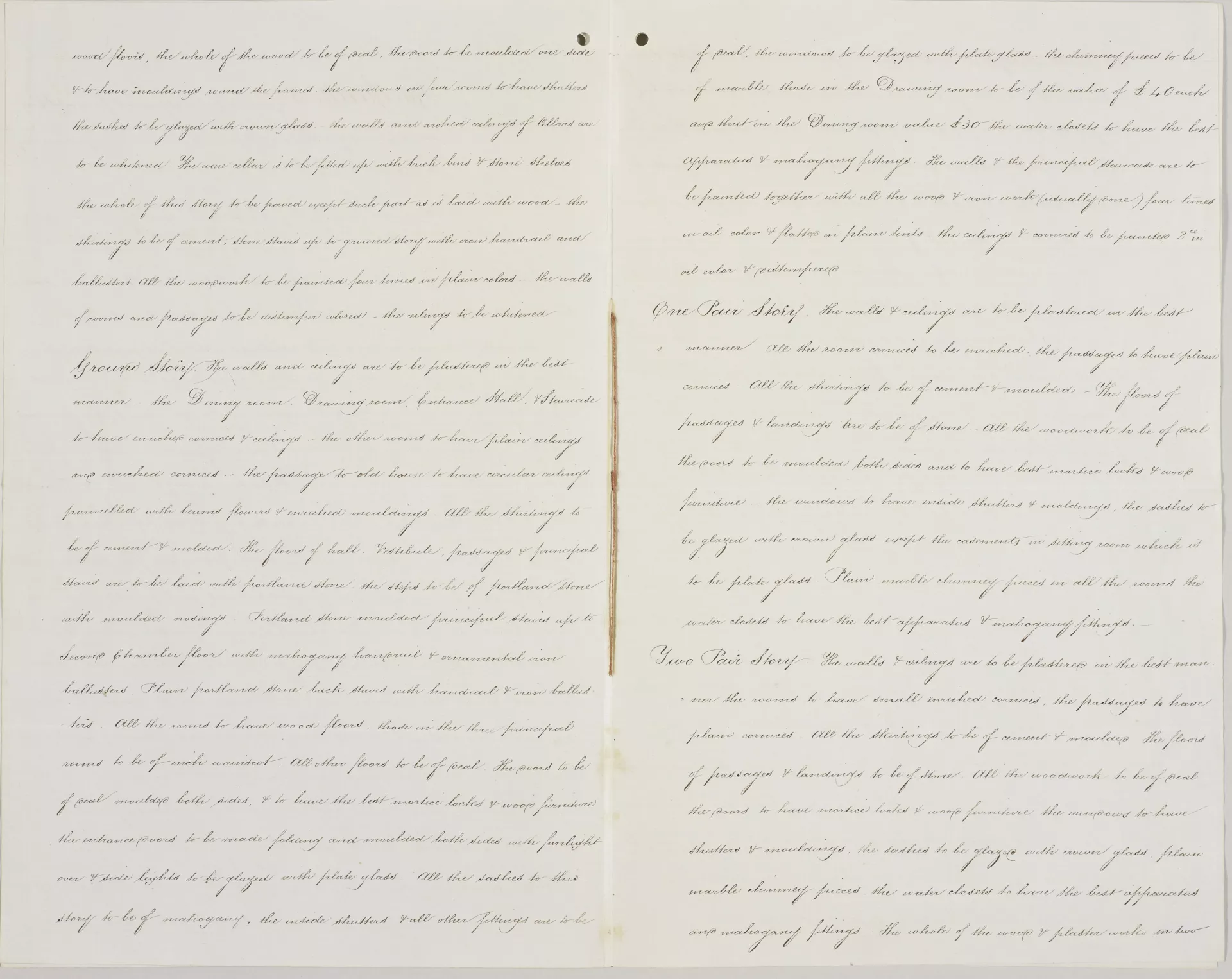RA PPTO/PP/OSB/MAIN/OS/2
c.1845Specification for building Osborne House
Osborne House, at the time when Queen Victoria purchased it in 1845, was a three-storey eighteenth-century stone and brick building, described by a surveyor as ‘a plain substantial edifice … in perfect order and condition … a comfortable and very commodious residence for any gentleman’s family … a very desirable residence’.
Its situation, at the centre of its own private estate on the Isle of Wight, with beautiful sea views and its own beach, certainly made it a perfect choice for the Royal Family’s new seaside retreat. Yet, despite the surveyor’s verdict, it was clear that the house was not big enough for their growing family (only four of their nine children had then been born) and all their staff.
While improvements were being made to the existing house, Prince Albert selected the fashionable London builder Thomas Cubitt, to prepare plans (which, sadly, have not survived) and this detailed specification for a new building, the Pavilion, to house the Royal Family and to be linked to the old house by a corridor.
The new Osborne House was intended as a family home rather than a palace, so, as the specification makes clear, although the new House was designed to be classical in appearance, its construction was economical. Thus, for instance, the building was to be constructed of brick, with a coloured cement render to make it look like stone. Nor was Cubitt expected to undertake any ‘gilding or fancy painting’ in the interior, this being left for Ludwig Gruner (1801–82), the Queen’s Adviser in Art, to design. Cubitt estimated that the Pavilion would cost £15,000 (over £650,000 at today’s values), plus an additional £1,675 to cover the costs of the Kitchen and the Scullery.
After the completion of the Pavilion in 1846, work began immediately on constructing another, much larger building, to provide accommodation for the Household and guests, and for offices. This was ready by 1851. Its construction necessitated the demolition of old Osborne House, somewhat to Queen Victoria’s regret, as ‘for two years we were so happy in [it], as it was our first own little home’. However, this regret was more than tempered by the delights of ‘this Paradise, this perfect house’ that her beloved husband had helped to design.





